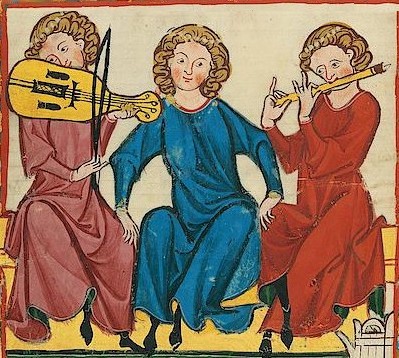Madrigal
Madrigal (it. Madrigale from Latin matricale). Form of vocal chamber music, the number of voices varies from two to eight, and most frequently from three to six; the musical form reflecting the structure of the poem. Usually, the main subject of madrigal is love story. Madrigal was really popular during Renaissance period.
Motet
Motet (French motet from Latin motetus) - style of vocal composition with polyphonic structure. Typically, it is a Latin religious choral composition, yet it can be a secular composition or a work for soloist and instrumental accompaniment, in any language, with or without a choir.
Chanson
Chanson - French song of Medieval and Renaissance period. Usually, it was written for one solois and one instrument. Almost all chansons were written in Rondo, ballad or virelai form. Main subject - courtly love. Chanson was favourite genre of troubadours in 13 - 14th century.
Organum
Organum is an early Medieval form of plainsong, or plainchant (e.g. Gregorian chanting) that has its origins from 9th Century France. There are three organum forms: free, florid and melismatic.
Choral
Choral (Latin choralis/cantus choralis - choir singing) - choral music is necessarily polyphonic; consisting of two or more autonomous vocal lines. It has a long history in European church music.
Author: Alisia Holainen
Blog Musique de Cour
Musique de Cour on Instagram - here

.jpg/743px-Rest_on_the_Flight_into_Egypt-Caravaggio_(c.1597).jpg)


Comments
Post a Comment